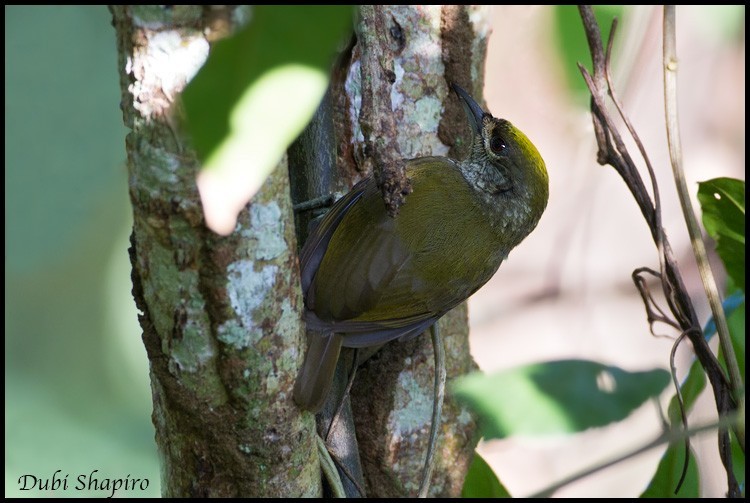Antillean Piculet
A species of Antillean Piculet Scientific name : Nesoctites micromegas Genus : Antillean Piculet
Antillean Piculet, A species of Antillean Piculet
Botanical name: Nesoctites micromegas
Genus: Antillean Piculet
Content
Description General Info
 Photo By Dubi Shapiro
Photo By Dubi Shapiro Description
The species is a small woodpecker, although it is twice as large as any of the other piculets, measuring around 14–16 cm and weighing around 30 g. The male has a yellow crown with a red spot in the centre. The plumage of the back, neck and wings is olive green, and the breast, throat and belly is off-white with streaks and spots. The female is similar to the male, except larger and lacking the red spot on the forecrown. The plumage of juvenile birds is similar to the adults but duller. Unlike the true woodpeckers (Picinae), they do not drum on trees to advertise their ownership of a territory, instead calling in a loud and rapid whistle. This call, rendered as "kuk-kikikikekukuk", is also used as a contact call between pairs. 
Size
16 cm
Nest Placement
Cavity
Feeding Habits
Antillean Piculet predominantly feeds on insects such as ants and small beetles, but also includes other arthropods and some fruits in its diet. Its unique feeding adaptations facilitate foraging on tree bark and branches.
Habitat
Antillean Piculet thrives in a range of habitats, from humid to dry primary and secondary forests to mixed pine and broadleaved forests. These birds are also accustomed to semi-arid regions with mixed desert scrub and thorn-forest, mangroves, and occasionally orchards, dense cultivation, and plantations. They prefer dense undergrowth and can be found from lowland areas to mountainous regions, with a notable presence at elevations around 600 m, extending up to 1770 m in specific mountain ranges.
Dite type
Carnivorous
General Info
Feeding Habits
Bird food type

 Photo By Dubi Shapiro
Photo By Dubi Shapiro